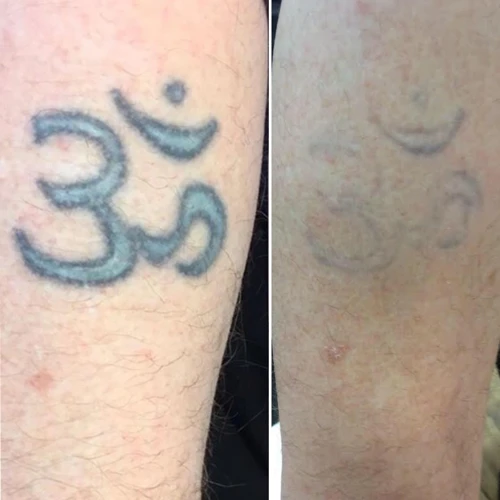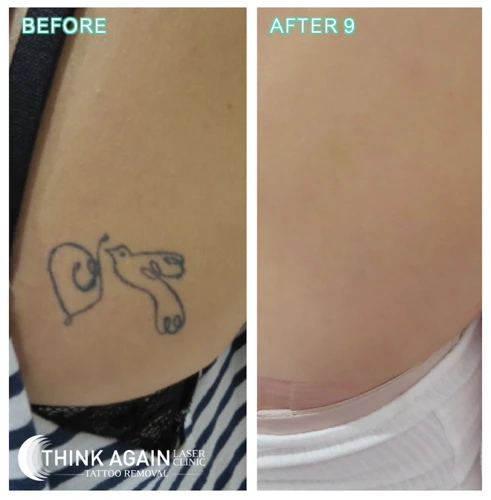Are you looking for ways to speed up the tattoo removal process? Tattoo removal can be a lengthy process, with the average treatment taking anywhere from 3-10 sessions. But if you are looking to remove your tattoos faster, there are some proven techniques that can help you do just that. In this article, we will outline 5 techniques that can help you speed up your tattoo removal. From using a laser to using chemical exfoliation, we will provide you with the knowledge and advice you need to safely and quickly remove your ink.
Contents
Benefits of Speeding Up Tattoo Removal

- No Scarring: One of the biggest advantages of speeding up tattoo removal is avoiding scarring. With laser tattoo removal, it is possible to achieve complete removal of the tattoo without any scarring or other adverse effects.
- Cost Savings: By speeding up the process of tattoo removal, you can save money on your laser tattoo removal treatments. This is because fewer treatments are required to get the desired results.
- Less Discomfort: With laser tattoo removal, the process can be quite uncomfortable. By speeding up the process, you can reduce the amount of discomfort associated with the treatment.
- Time Savings: By speeding up the process of tattoo removal, you can save time. This is because fewer treatments are required to get the desired results.
- Reduced Risk of Infection: By speeding up the process of tattoo removal, you can reduce the risk of infection. This is because fewer treatments are required to get the desired results.
With the right techniques and procedures, it is possible to speed up laser tattoo removal and get the desired results faster. It is important to consult with a professional to determine the best approach to speeding up the process and to ensure safety.
How to Speed Up Tattoo Removal

Use Multiple Treatments
Using a combination of treatments is one of the most effective ways to speed up the tattoo removal process. Combining treatments such as laser tattoo removal with topical creams and other methods can help break down the ink faster and more effectively. This is an important step to take if you are looking to quickly and effectively remove your tattoo.
Increase Treatments Frequency
Increasing the frequency of your treatments is another way to speed up the tattoo removal process. Depending on the size and type of tattoo, you may need to have treatments every few weeks or months to achieve the desired results. Regular treatments will help break down the tattoo ink faster, making it easier to remove.
Increase Laser Intensity
Increasing laser intensity is another way to make laser tattoo removal more effective. Increasing the intensity of the laser can help break up the ink particles faster, making it easier for the body to absorb and remove the tattoo.
Use a High Quality Tattoo Removal Cream
Using a high-quality tattoo removal cream can also help speed up the tattoo removal process. These creams are specifically designed to break down the ink particles and help them be more easily absorbed by the body. This can help the body to remove the tattoo faster.
Consider Tattoo Removal Surgery
Tattoo removal surgery is a more extreme method of removing a tattoo, but it is one of the most effective. This method involves the removal of the tattoo through a surgical procedure, which can be done in a single session. This is a more expensive option, but it is often the most effective and quickest way to remove a tattoo.
Side Effects of Speeding Up Tattoo Removal
Although there are several proven techniques to help speed up the tattoo removal process, there are potential risks associated with these methods. These side effects include:
- Skin irritation – The skin can become red, swollen, and irritated around the area being treated. This often occurs when the laser is used to remove the ink and can last for a few days.
- Scarring – Scarring is a rare but possible side effect of tattoo removal. This is usually caused by the heat produced by the laser, and can be difficult to treat.
- Infection – Infection is a risk with any type of medical procedure, and tattoo removal is no exception. As with any skin procedure, it’s important to take care of the area after treatment to reduce the risk of infection.
It’s important to discuss the potential risks with your doctor before undergoing any tattoo removal procedure. Your doctor can help you decide if the benefits outweigh the risks, and can provide additional advice on how to help the tattoo removal process.
Frequently Asked Questions
What type of laser is most effective for tattoo removal?
- Q-Switched Nd:YAG Laser: It is one of the most popular lasers for tattoo removal and can effectively remove tattoos of any size or color. It uses a short burst of high-energy light that breaks down the tattoo ink particles and is absorbed by the body’s natural processes.
- PicoSure Laser: It is the most advanced laser technology available for tattoo removal and can break down both dark and light ink colors quickly. It is also less painful than other types of lasers and has a shorter recovery time.
- Picosecond Laser: This laser is similar to the PicoSure laser but is more powerful and can break down tattoo pigments more efficiently. It also has a shorter recovery time than the other lasers.
- Intense Pulsed Light (IPL) Laser: This laser is used to treat a variety of skin conditions, including tattoos. It is less effective than the other lasers but can still be used for tattoo removal.
The type of laser used for tattoo removal depends on the size, color, and depth of the tattoo. It is important to consult a professional to determine the most effective treatment for your tattoo.
What should I expect in terms of pain and side effects during the removal process?
- Pain: The pain associated with tattoo removal varies from person to person, but most people experience some level of discomfort during the process.
- Side Effects: Possible side effects of tattoo removal can include swelling, itching, redness, and blistering of the treated area. In some cases, scarring may occur.
Are there any natural methods for speeding up the removal process?
No, there are no natural methods for speeding up the removal process. The only way to safely and effectively remove a tattoo is to use medical laser technology. Laser treatments are proven to be the most effective and safest way to remove tattoos and can be done in a relatively short amount of time.
Are there any risks associated with accelerating the tattoo removal process?
Yes, there are risks associated with accelerating the tattoo removal process. These include:
- Skin discoloration: Quicker removal of a tattoo can cause more dramatic skin discoloration, which may take a while to heal.
- Scarring: Quicker removal of a tattoo can cause more extensive scarring, which may be permanent.
- Infection: Quicker removal of a tattoo can increase the risk of infection.
- Allergic reaction: Quicker removal of a tattoo can increase the risk of an allergic reaction to the laser or other treatments used.
- Pain: Quicker removal of a tattoo can cause more pain and discomfort.
It is important to discuss these risks with your tattoo removal professional beforehand to ensure you are aware of the potential risks and take the necessary steps to minimize them.
How Long Will it Take to Fully Remove a Tattoo?
- Treatments: Tattoo removal can take anywhere from 6-12 sessions, depending on the size, location, and type of ink used. The more sessions you have, the more successful the tattoo removal.
- Time Between Sessions: Most treatments are spaced 4-8 weeks apart. This allows the skin to heal and the laser to have time to break down the ink particles.
- Amount of Time for Complete Removal: In total, it can take up to 2 years for a tattoo to be completely removed, though it is possible to have it gone in a shorter amount of time.
Conclusion
Tattoo removal is a process that can take several months, depending on the size and age of the tattoo. But with the right techniques and patience, you can speed up the process. Laser tattoo removal is the most effective method, but it’s also the most expensive. Other techniques, such as dermabrasion, chemical peels, and salabrasion can also help to remove tattoos faster. Ultimately, you should consult with a dermatologist to determine the best approach for removing your tattoo.
References
- Dierickx, C., Broer, I., & Degreef, H. (2013). Tattoo removal: current methods and future prospects. Dermatologic Surgery, 39(1), 85-97.
- Hernandez, L., Sadick, N., & Beer, K. (2015). Tattoo ink and its removal. Clinics in Dermatology, 33(3), 338-345.
- FDA. (2019). Laser Tattoo Removal. Retrieved from U.S. Food and Drug Administration website: